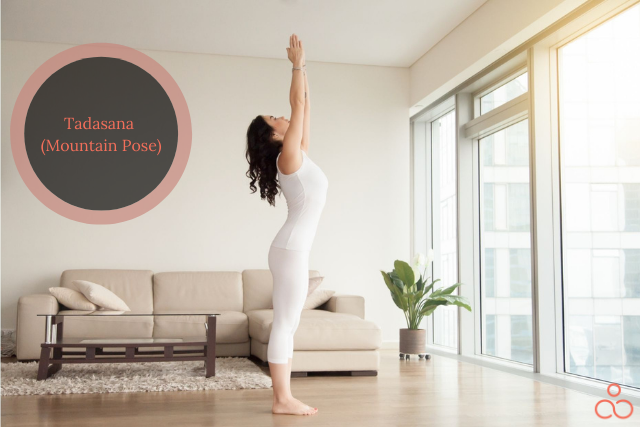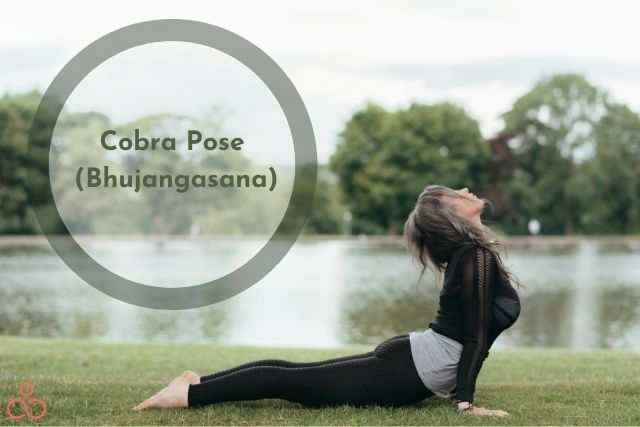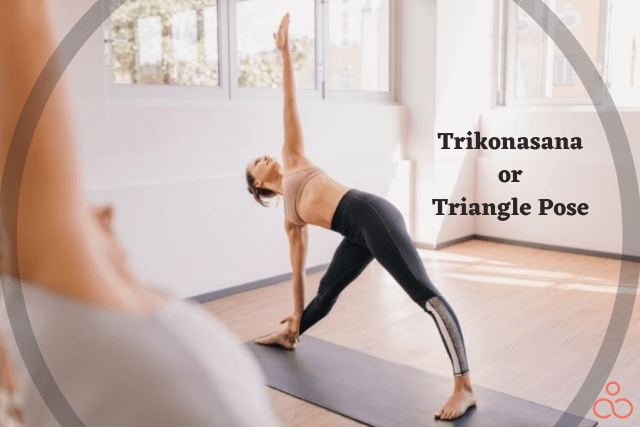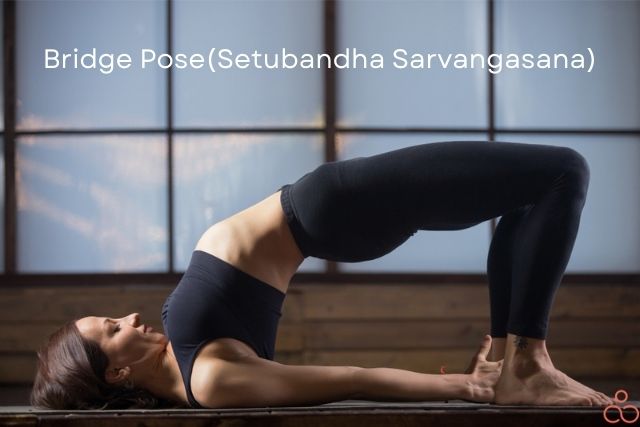Everybody who enjoys an active lifestyle has to begin paying extra attention to their joint mobility and flexibility. Knees are crucial as they help you in carrying your entire body weight. They also play an important role in all high-intensity exercises, including running, jogging, hiking, yoga, dancing, kickboxing, and other forms of martial arts. There is a great possibility to injure your knee joints either by being excessively active or even by leading a sedentary lifestyle. Yoga poses on knees in particular can shore up your knee joints and may be able to assist you to avoid more knee-related problems in the future.
Causes and symptoms of knee pain
In the current lifestyle, knee discomfort is a fairly acute condition that affects many people. The elderly, adults, and teens exhibit it, all alike. Right from lifestyle issues to overuse of strong medications, there could be several reasons that might push you to experience discomfort in your knees. Here, we have listed some of the most commonly heard causes of knee pain.
Common Causes:
- Knee bursitis (inflammation in one or more bursae of the knee)
- Ligament rupture (a tear in the ligament or a severe sprain)
- Torn cartilage ( a tear in the knee cartilage called the meniscus, commonly seen in sportspersons)
- ACL injury (a tear in the Anterior Cruciate Ligament that connects the thigh bone to the shinbone)
- Patellar tendonitis (injury to the tendon that connects your kneecap to the shinbone)
- Gout
- Iliotibial Band Syndrome (ITBS is a painful knee condition where the tendon called the iliotibial band rubs against the thigh bone due to inflammation)
- Dislocated kneecaps
- Bone degeneration
- Septic arthritis (joint pain that is caused due to germs that travel to different parts of the body using blood as their medium)
- Osteoarthritis (pain in the joints caused because of wear and tear of the flexible tissues at the end of the bones)
- Rheumatoid arthritis (pain in the joints caused due to the autoimmune condition of the body)
- Overactive joint engagement, mostly seen in sportspersons and athletes
- Extensive use of drugs like steroids and diuretics
- Overweight due to hormonal imbalances
- Aging
Signs and symptoms of knee pain
While we have just seen all the possible causes that could result in knee pain, let us now understand the signs and symptoms that you must look out for, to protect yourself from falling prey to serious medical issues. If you experience any of the below-mentioned symptoms, it’s time you pay some extra attention to those joints!
- Stiffness while moving around
- Swelling in the knee joints
- Redness in the skin around joints
- Weakness to stand long or pain to stay mobile
- Difficulty straightening the knee
- Odd noises when you fold and stretch your leg
- Problems in bearing weight on the knees
- Fever with pain in joints
9 best yoga poses on knees
Slow and controlled movement is necessary for the patient who is experiencing knee discomfort. The problem might get worse if there is no movement or decreased movement. One can do all conceivable stretching motions with the aid of yoga. Yoga helps prevent knee injuries by maintaining the health and flexibility of the knees. Yoga can help manage knee discomfort by strengthening and stretching the knee muscles around it. Yoga movements increase joint flexibility, reduce the risk of knee injuries, and extend the muscles around the affected joints. Let us learn some of the best yoga poses on knees here:
Butterfly or Patangasana
- Sit upright, keeping your back straight, and place your legs in front of you.
- Bring your legs toward your pelvis with a little knee bend so that the soles of your feet are in contact.
- Depending on how tightly you grab them, you can hold your feet in your palms.
- Bring your heels as near as you can to your genitalia.
- Do not slouch; keep your spine upright.
- Now begin to raise and lower your thighs like a butterfly’s wings.
- During the procedure, you are allowed to breathe a bit more deeply.
- Spend 5 to 6 minutes on it. Recognize the stretch. You can speed up if you feel comfortable.
Advantages of the butterfly posture:
- Assists with menopause.
- Controls appropriate blood flow.
- Makes the thigh and hip region flexible.
- Gives the knees and inner thighs a wonderful stretch.
- Helps pregnant women deliver their babies more successfully.
Mountain Pose or tadasana
- Start by standing up and maintaining a straight neck and waist.
- Now raise your hands over your head and gently raise your entire body while inhaling.
- From your toes to your hand’s fingertips, feel the strain.
- Hold this position for a while breathing normally.
- Then gradually return your body and hands to normal.
- Complete one cycle in this manner and try to repeat this three to four times based on your comfort.
Advantages of the mountain pose:
- Strengthens the knee and thigh muscles.
- Stretches and strengthens the spine.
- Reduces tension.
- Enhances overall posture of the body.

Cobra pose or bhujangasana
- Lie down on your stomach and keep your legs stretched straight at the back.
- Apply pressure on the ground while inhaling, as if you were attempting to push it with both hands.
- In this position, your elbows can remain bowed.
- Now, gently thrust your chest upward while attempting to look up toward the sky.
- Legs should be straight, and the navel should be touching the ground.
- Do your best to stretch; do not attempt to compel the body.
Advantages of Cobra Pose:
- Reduces the discomfort in the lower back.
- Increases the spine’s flexibility.
- Bolsters the muscles of the back and chest.
- Improves the heart’s blood flow.

Triangle Pose or trikonasana
- Stand straight, space your feet out past your shoulders, and keep your arms at your sides.
- The stretch gets more painful with wider positioning of the legs.
- With your palms facing down, raise your arms to shoulder height.
- Make a slow, straight move to your right side while maintaining alignment.
- Knees ought to be straight.
- Turn your left foot to 45 degrees and your right foot to 90 degrees while keeping the heels parallel to the hips.
- Stand tall as you inhale, then try to stretch your right hand toward your right-side foot as you exhale. And the left hand ought to be pointed upward.
- Hold your breath for 20 seconds.
- Resume your regular position, switch your hands and do the same step sequence on the opposite side.
Advantages of triangle pose:
- Stretches the muscles in the knee, leg, back, and chest.
- Reduces knee discomfort by strengthening the knee and ankle joints.
- Enhances the functioning of abdominal organs.

Supported Chair Pose or Utkatasana
- As in tadasana, stand straight with your hands up.
- When you exhale, bow your hips such that you are sitting back in a chair-like position.
- You should be able to view your toes while keeping your hips and knees back.
- Continue to sit in that position while extending your hands upward.
- Hold the pose for 6 to 8 breaths.
- Lower your arms and return to your regular standing position.
Advantages of the supported chair pose:
- Strengthens knee, ankle, and leg muscles.
- Strengthens and stretches the spine and back muscles.
- Boosts abdominal muscle strength.

Child Pose or balasana
- Kneel to the ground.
- Your big toes should be in contact with one another and space your knees slightly apart.
- Exhale while bending forward until your forehead touches the ground and your stomach and chest rest on the thigh.
- Arms can be raised aloft with the palms facing down.
- After holding this position for ten breaths, return to your regular position by inhaling.
Advantages of child poses:
- Strengthens the thighs, ankles, and hips.
- Strengthens and stretches the knee ligaments and tendons.
- Regulates the flow of blood.
- Enhances digestion.
- Reduces stress in the shoulders and back.

Downward-facing dog pose or adho-mukha svanasana
- Keep your arms at shoulder width apart.
- Make an effort to push the ground away from you.
- Legs should be straight. Begin lifting your hip off the ground.
- For appropriate balance, palms should be levelled on the ground with fingers spread widely apart.
- Adjust your weight and maintain the right balance on the legs. As long as you can, maintain this position; then, return to normal.
Advantages of the downward dog position:
- Strengthens the legs and arms.
- Relaxes the mind
- Stretches the back, thighs, and arms.

Pigeon Pose or kapotasana
- Begin in the cobra pose and slowly bring the right leg forward while stretching the left leg back.
- Kneel on the right leg.
- Hold your hands outward toward the legs.
- Exhale while maintaining a straight posture, and feel the weight on the right leg.
- Hold for a couple of breaths and relax.
- Try and repeat the same sequence of steps with your left leg.
Advantages of a pigeon pose:
- Stretches the hip flexors.
- Strengthens the leg muscles.
- Stretches and strengthens the abdominal muscles.
Bridge Pose or setu bandhasana
- Place your palms downward while lying on your back.
- As you breathe in, lift your thighs and hips toward the sky while keeping your feet firmly planted on the earth.
- Your whole weight should be supported by your feet.
- Ensure your chest meets the chin, and the thighs are parallel to the ground.
- Continue to breathe normally.
- You may also use your hands to raise a little bit more if you’d like.
Advantages of bridge pose:
- Boosts core strength.
- Reduces menstrual pain.
- Relieves stress in the legs, particularly around the knee.
- Stretch your chest muscles.
- Increases the efficiency of the abdominal organs.

Why does yoga work for knee pain?
Yoga offers several advantages if you consistently practice it. The right balance, stretch, and flexibility in your postures can help you get rid of knee discomfort as you consistently practice yoga poses for stronger knees. Yoga is a regular practice that functions similarly to physical therapy. The yoga postures for stronger knees indicated here address knee discomfort specifically by strengthening the knees, while they also have additional advantages including strengthening the hip, leg, and arm muscles. 6 studies conducted on 325 patients with a common medical condition of osteoarthritis showed positive results in mobility and pain reduction in as short as a few weeks. However, before starting any new poses or exercise regimes, we recommend you consult your doctor to understand your existing medical condition and if it is safe to practice or not.
Massage treatments for knee discomfort
Both heat therapy and massage therapy are effective in healing knee injuries and regaining knee strength and flexibility. Joint mobility is made simpler and easier by massaging with ayurvedic herbal oils and then applying mild heat with a heat bag. Yoga asanas can have a better impact on knee pain when taken in combination with Ayurvedic hot oil massage therapy sessions. Your knees and joints can also be strengthened by taking a steam bath or a sunbath.
FAQ’s
Yoga is a terrific low-impact workout alternative that works wonders whether you have a recent knee injury or persistent knee discomfort. Make sure you’re including the above-mentioned yoga positions in your everyday practice if you’re concerned that yoga will do your knees more harm.
When doing yoga, should you protect your knees?
Though it is not necessary to use any additional supports while engaging in yoga poses, it is purely a personal choice to use one. If you are someone with existing knee pain we advise using a blanket to cushion your knee or avoiding positions like the One-Legged King Pigeon Pose that put a strain on the joint. In the long run, you can also choose thicker yoga mats that can provide the additional necessary cushioning for your joints.
Conclusion
You might be reluctant to twist yourself into a pretzel if you have knee problems, which is understandable. However, research indicates that the appropriate form of yoga can be quite beneficial for those who suffer from knee discomfort. In actuality, several postures are expressly designed to relieve stress on the knees, while others may be readily altered to protect your joints. Remember that developing a strong yoga practice takes time. Over time, you can advance to the rank of yogi. Also, keep in mind that you should alter or stop if something hurts.

